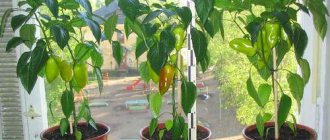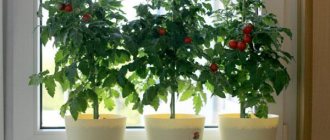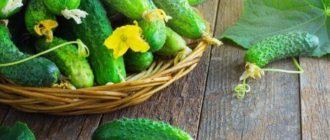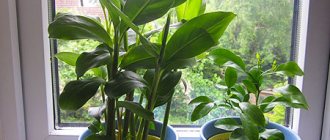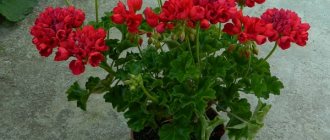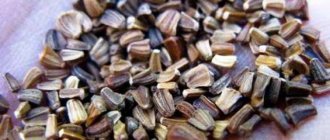Mint is easy to grow
Mint grows almost on its own in the garden. She only needs moist soil and light shade. Sometimes it grows so large that it becomes a problem. Unfortunately, mint does not grow so readily in pots yet, but it’s still worth a try. This is because mint has very versatile uses - both as a seasoning and as an herb.
Peppermint tea is the main way to “rescue” after too long a lunch (eases digestion), but this is only one way to use mint. Dried mint is ideal for infusions, and fresh leaves are an excellent addition to various dishes - from meat and vegetables to desserts. Therefore, it is worth making sure that fresh mint is always within reach.
Plant care
Mint is easy to care for. In winter, watering is reduced and care is taken to ensure that the soil does not become waterlogged. In winter, plant growth slows down and the need for moisture and nutrients decreases. It is recommended to regularly spray the greenery with a spray bottle. The place must be protected from drafts.
In summer, the soil should not be allowed to dry out. Lack of moisture leads to the death of the plant, and the risk of developing diseases and pests also increases.
As soon as the first shoots appear, the container with seedlings is moved to a lighted place. If there is a lack of light, artificial lighting is provided. The optimal indoor air temperature is considered to be between +20 and +25 degrees.
Mint in a pot - how to start growing
Mint is very easy to propagate using seedlings. In practice, this means that we simply pick a twig with a few leaves and put it in water. In a few days the roots should come out and our seedlings are ready. So we can get it from our own garden, or from a friend who owns a plot. We can also buy a bunch of fresh mint and use some of the branches for seedlings. This fresh mint can often be purchased at health food stores, but it can also be sold at markets - straight from the gardens. And this one is definitely worth buying.
But when the time for fresh mint is over, there is no need to wait until next season. You can buy mint in a pot at the supermarket, you just need to take a little care. Mint can also be grown from seeds, but this is a much longer process than getting it from cuttings or buying a “ready” plant.
Top dressing
Mint does not need frequent feeding. It is enough to feed once a year, preferably in the summer. In winter, the plant is dormant, and additional nutrients will promote shoot growth.
A week after planting, it is recommended to feed the plant with a urea-based solution (2 grams of urea per liter of water). Nitrogen-containing fertilizers should not be applied, as they reduce the content of essential oils in the plant.
What you need to grow mint in a pot
If we buy mint in the supermarket, we will definitely transplant it into a large pot with good soil.
Mint naturally grows in places that are partially shaded and moist. We will have to provide her with similar conditions at home. To grow mint you will need a fairly large pot - mint produces strong roots, so it will be cramped in a small pot. The pot should have holes, and at the bottom you need to pour, for example, small pebbles or expanded clay. Because even though mint loves moisture, water should not sit in the pot. Mint can easily grow in universal soil for flowers, but it is better to pour a little sand into it.
In such a prepared pot, we place seedlings or a bush bought in a store. By the way, if we buy it in a supermarket and leave it in the original pot, it will be “disposable”, because neither the soil nor the pot will provide the plant with conditions for long-term growth.
A flower pot with mint can be placed on the windowsill of a window facing east or west. In winter, when there is not enough light, a south-facing window will also be appreciated.
Preparing seeds and cuttings for planting
It is best to purchase mint seeds at a specialty store. Self-collection of seeds is a labor-intensive and complex process. Even if you manage to collect planting material, the plant will differ from the original version not only in appearance, but also in aroma and taste.
- To make seedlings appear faster, the seeds are soaked.
- As soon as the first shoots hatch, they begin planting in the soil.
- For a week, the container with the seeds is covered with film and put in a warm, dark place.
- After most of the seedlings have appeared, the container is moved to a bright place.
See also
Medicinal properties of mint for the human body, scope of application and contraindications
Read
If you plan to grow mint from cuttings, then cut off the upper shoots of an adult plant, 10 centimeters long. The cuttings are first placed in water. As soon as the roots appear (after about 1.5 weeks), you can begin planting in a prepared container with soil.
What should the place be like?
In the apartment, you should choose the most illuminated window sill, preferably on the western or eastern side. Lack of light leads to the elongation of the plant stem and a decrease in the content of essential oils. At the same time, seedlings need to be protected from direct sunlight, which can burn the greenery.
The plant develops well at room temperature from +20 to +25 degrees. The spice loves moist air, so it is recommended to place a container of water nearby.
Where to plant
When choosing a container, you need to take into account the amount of desired harvest. If a few branches are enough, you can use flower pots. To obtain a large harvest, you will need a large container.
The mint root system does not go too deep into the ground, so it diverges close to the surface. It is better to choose shallow containers with a large diameter. Be sure to make holes at the bottom of the pot that will not allow excess liquid to stagnate. Before filling the container with soil, drainage is placed.
What soil to plant in
The soil for mint should be loose, light, fertile, with normal acidity and high aeration. You can buy soil or mix it yourself. Humus, peat and sand are added to the soil from the garden. These components provide additional nutrition to the plant and improve oxygen access to the roots. Then the resulting mixture is calcined in the oven.
The acidity level should be neutral. Low acidity leads to a decrease in the content of essential oils in greens. Increased acidity causes slow plant development.
Cat antidepressant about beautiful flowers. How to grow catnip?
photo by Fotolia Catnip can be confused with lavender - its flowers are visually very similar. The petals are not always purple, however: they can also be white or pink. Unlike lavender, catnip has much less requirements when it comes to growing. Withstands low temperatures, is disease resistant, blooms from June to...
Harvesting
Depending on the planting method, mint is grown within 30-90 days.
Harvesting mint for further storage
Once the stems reach a length of 15-18 cm, the mint can be cut, following these recommendations:
- To stimulate the growth of lateral branches, the leaves growing at a distance of 1.5-3 cm from the stem are torn off.
- Long stems are cut off by no more than a third, since cutting at the root can cause growth to stop.
- Blooming mint redistributes all the beneficial substances from the bush into the inflorescences, so during this period it is recommended to cut off the tops 1-2 cm above the branching point of the main and side stems.
The cut crop is stored in the refrigerator in a container with holes for ventilation, frozen or dried in the shade in the air.
Install a herbarium on the balcony
photo by Adobe Stock Most herbs grow well in balcony boxes. It is better to choose a place that is sunny but protected from the wind. The soil for the grass must be fertile. It is worth adding a little sand and gravel to it (relaxes the soil a little), and after three weeks, cover it with peat or compost. In one large pot you can...
The soil
It is recommended to grow herbs in loose humus or peaty soil with an average acidity level (no more than 5-6 pH).
How to grow Rosemary from seeds at home
A soil mixture with these parameters can be purchased from a specialized department or made yourself in the following proportions:
- Garden soil, rotted humus, coarse sand and peat are mixed in equal parts.
- A mixture of 2 parts garden soil and 1 part peat is considered less nutritious and suitable in composition.
The soil mixture is poured into a wide, shallow container with a diameter of at least 20 cm, since during normal development the spice grows wide, deepening the roots far into the soil.
Important! To maintain an optimal level of humidity, the bottom of the container should be equipped with holes to drain excess water or a drainage layer of small pebbles or expanded clay should be poured.
How to grow herbs on the balcony and in the garden?
photo Fotolia They will grow both in a balkonowej box and in a garden garden. We will be able to enliven dishes with them, and, by the way, enjoy their beauty. Some species may compete with flowers. There are leaves with the addition of white, yellow and even purple. Some, like lavender and catnip, also bloom beautifully. Yet they contain…
Diseases and pests
Diseases that can harm the development of mint:
- rust - manifests itself as dark red spots on the inside of the leaves (fungal disease is provoked by excessive soil moisture, cold air, excess nitrogen in the soil);
- powdery mildew is distinguished by a whitish coating reminiscent of flour;
- verticillium wilt begins with blackening of the upper leaves of the plant;
- if brown spots appear on the leaves, they speak of a disease such as anthracnose;
- Septoria blight is accompanied by the appearance of black spots and brown spots on the leaves.
The fragrant plant is attacked by many pests. Commonly encountered insects include:
- mint flea beetle (small yellow bugs make round holes in the leaves);
- green shield moth (makes holes and eats the edges of leaves);
- Aphids are considered dangerous for the plant (small insects live on the back of the leaves and feed on the sap of the plant);
- weevils (adults feed on leaves, and larvae feed on roots);
- mint mite (the insect feeds on the juice of young plants).
To combat pests and diseases, solutions prepared according to folk recipes or ready-made chemical or biological preparations are used.
Lavender in the house all year round. How to grow lavender in a pot
Lavender is suitable not only for growing in the garden, but also in a pot. Lavender can decorate not only our garden, but also our apartment. We will tell you what conditions need to be provided for lavender so that it grows well in a pot. Lavender is not only in the garden Romantic and charming lavender has recently become one of...
Dividing the mother bush
With this method of propagation, new plants retain all the varietal characteristics of the mother plant. You can divide bushes from 3 years and older.
This should be done in late April-early May, provided that there are no sub-zero air temperatures at night.
Dig up the original bush and divide it into several parts. For them to take root, each part must have buds, several shoots and a rhizome.
Plant the separated bushes in holes about 10 centimeters deep, in loose, fertile soil. Sprinkle with soil, compact, water. Further care is the same as for an adult plant.
In order for the cuttings and parts of the mother bush to grow well, after 14-20 days you can fertilize them with a weak solution of urea, one liter per plant.



